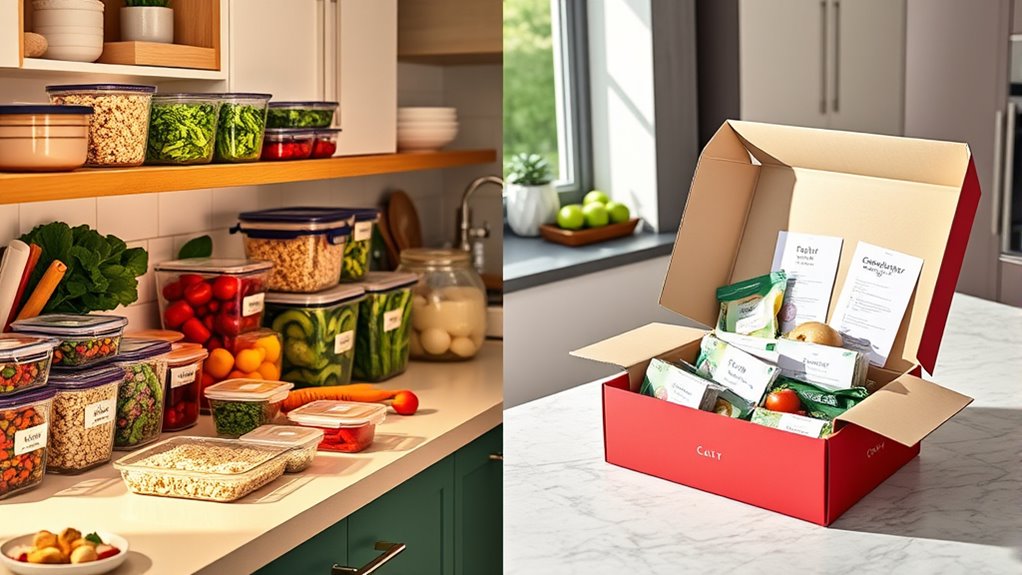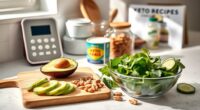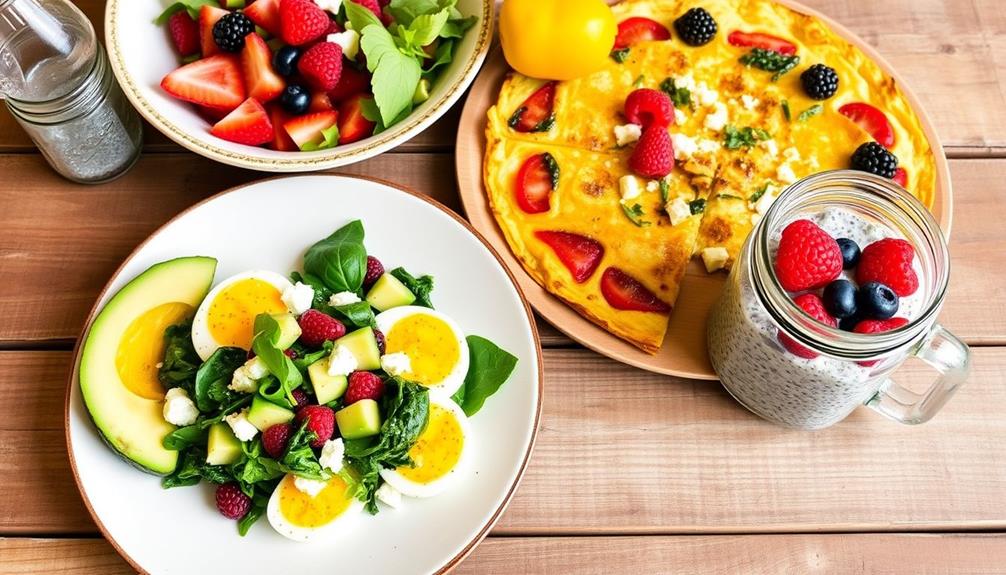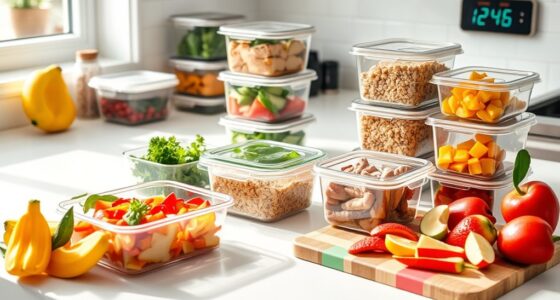Choosing between DIY meal prep and meal kit delivery depends on your priorities. DIY prep saves money through bulk buying, offers full customization, and helps reduce food waste, but it requires time and effort for shopping and cooking. Meal kits eliminate planning and save time, offering convenience with pre-measured ingredients, though they may be pricier and less flexible. Exploring the pros and cons further can help you pick the option that best fits your lifestyle and goals.
Key Takeaways
- DIY meal prep offers greater cost savings through bulk ingredient purchases and customization, while meal kits reduce shopping and prep time.
- Meal kits provide convenience with pre-portioned ingredients and step-by-step recipes, whereas DIY prep requires more effort and planning.
- Food waste is minimized with meal kits due to precise measurements; DIY may generate more waste without careful management.
- DIY allows full control over ingredients and dietary preferences, whereas meal kits typically have limited menu options and customization.
- Meal kits save time on shopping and cooking, making them ideal for busy schedules; DIY prepping is better for long-term cost savings and flexibility.
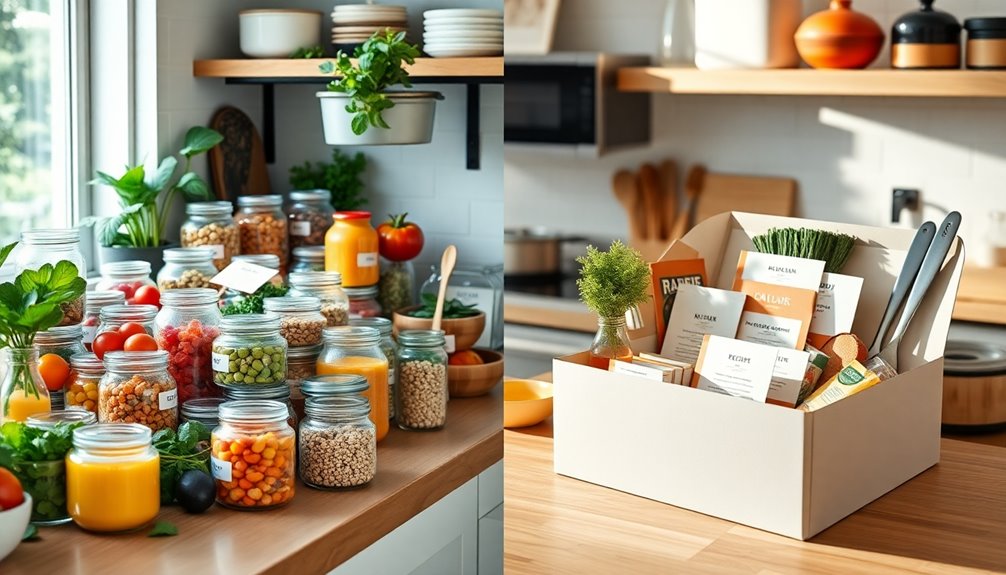
Deciding between DIY meal prep and meal kit delivery can considerably impact your weekly routine and diet choices. When weighing these options, two key factors often come into play: cost savings and time efficiency. DIY meal prep typically offers better cost savings because you buy ingredients in bulk and prepare multiple meals at once, making it a more budget-friendly approach over time. That means you can stretch your grocery dollars further by purchasing larger quantities and avoiding the per-meal delivery fees that meal kits often include. Additionally, cooking in bulk allows you to plan ahead, reducing daily decision-making and preventing last-minute takeout or unhealthy choices.
On the other hand, meal kit delivery services prioritize time efficiency. They eliminate the need for meal planning, shopping, and prep work, which can save you hours each week. With pre-portioned ingredients and step-by-step recipes delivered directly to your door, you breeze through cooking, often completing meals in under 30 minutes. This convenience is especially appealing if you have a busy schedule or dislike meal planning and grocery shopping. Meal kits also minimize food waste because ingredients are precisely measured, ensuring you only buy what’s needed for each meal. If you value quick, hassle-free cooking that fits into a hectic lifestyle, meal kits are a practical choice. Moreover, some meal kit services now incorporate advanced packaging technology to better preserve freshness during delivery, further enhancing convenience. This technology also helps reduce food waste, making meal kits a more sustainable option. Additionally, some services offer customization options, allowing you to tailor meals to specific dietary needs or preferences.
However, DIY meal prep requires a bit more effort upfront. You spend time shopping, chopping, and cooking, which can take several hours during a weekend or a designated prep day. Despite the initial investment of time, it pays off when you have ready-to-eat meals during busy weekdays, saving you from daily cooking and cleaning. Plus, with DIY prep, you have more control over ingredients—ideal if you’re aiming to cut costs further or customize meals to your dietary preferences. Conversely, meal kit services often come with a higher price tag per meal, which might offset some of the convenience benefits if you’re budget-conscious. They also limit flexibility, as you’re tied to the menu options provided by the service each week.
Frequently Asked Questions
Which Option Is More Eco-Friendly?
You might wonder which option is more eco-friendly. Generally, DIY meal prep reduces packaging waste because you buy ingredients in bulk and use reusable containers. Meal kit delivery often involves more packaging waste due to individual packaging for ingredients. However, ingredient sourcing matters too; meal kits sometimes use more sustainable sourcing practices. Overall, DIY meal prep can be more eco-friendly if you focus on minimizing packaging waste and choosing locally sourced ingredients.
How Does Cost Compare Long-Term?
Imagine cutting costs while enjoying flexible ingredients—that’s the long-term game. With DIY meal prep, you control ingredient flexibility, often reducing ingredient waste and saving money over time. Meal kit delivery might seem convenient, but subscription fees and pre-portioned ingredients can add up. Long-term, DIY options tend to be more budget-friendly, especially if you’re willing to customize and plan ahead, making your meals both economical and tailored to your tastes.
Are There Health Benefits to Each?
You’re likely curious about health benefits, and both options offer nutritional advantages. DIY meal prep lets you select fresh ingredients, ensuring high ingredient quality and tailored nutrition. Meal kit delivery often provides balanced, chef-designed recipes that promote healthy eating. Both approaches support better health, but DIY prep gives you more control over ingredients, while meal kits focus on convenience and consistent nutritional standards. Choose based on your specific health goals and lifestyle.
Can Dietary Restrictions Be Accommodated?
Think of your diet as a custom-made suit—perfect fit matters. When it comes to dietary restrictions, both options can be tailored. Meal kits often offer gluten-free options and consider nut allergy considerations, making it easier to stay safe. DIY meal prep allows you to control every ingredient, ensuring all restrictions are met. Whether you choose convenience or control, both can accommodate your needs with a little planning.
Which Saves More Time Weekly?
When comparing time savings, meal kit delivery generally offers a higher convenience factor, saving you more time each week. With pre-portioned ingredients and simple recipes, you spend less time grocery shopping and prepping. DIY meal prep, while flexible, can be more time-consuming because you need to plan, shop, and prepare ingredients in advance. If quick, hassle-free meals are your priority, meal kits tend to maximize your time savings.
Conclusion
Choosing between DIY meal prep and meal kit delivery is like picking your adventure—each has its own charm. I once tried meal kits during a busy week, and it felt like having a personal chef hand-delivering ingredients, making dinner effortless. According to studies, 65% of people find meal kits save time. Whether you enjoy the hands-on experience of prepping or prefer convenience, both options can make mealtime more enjoyable—so pick what fits your style and savor the journey!
